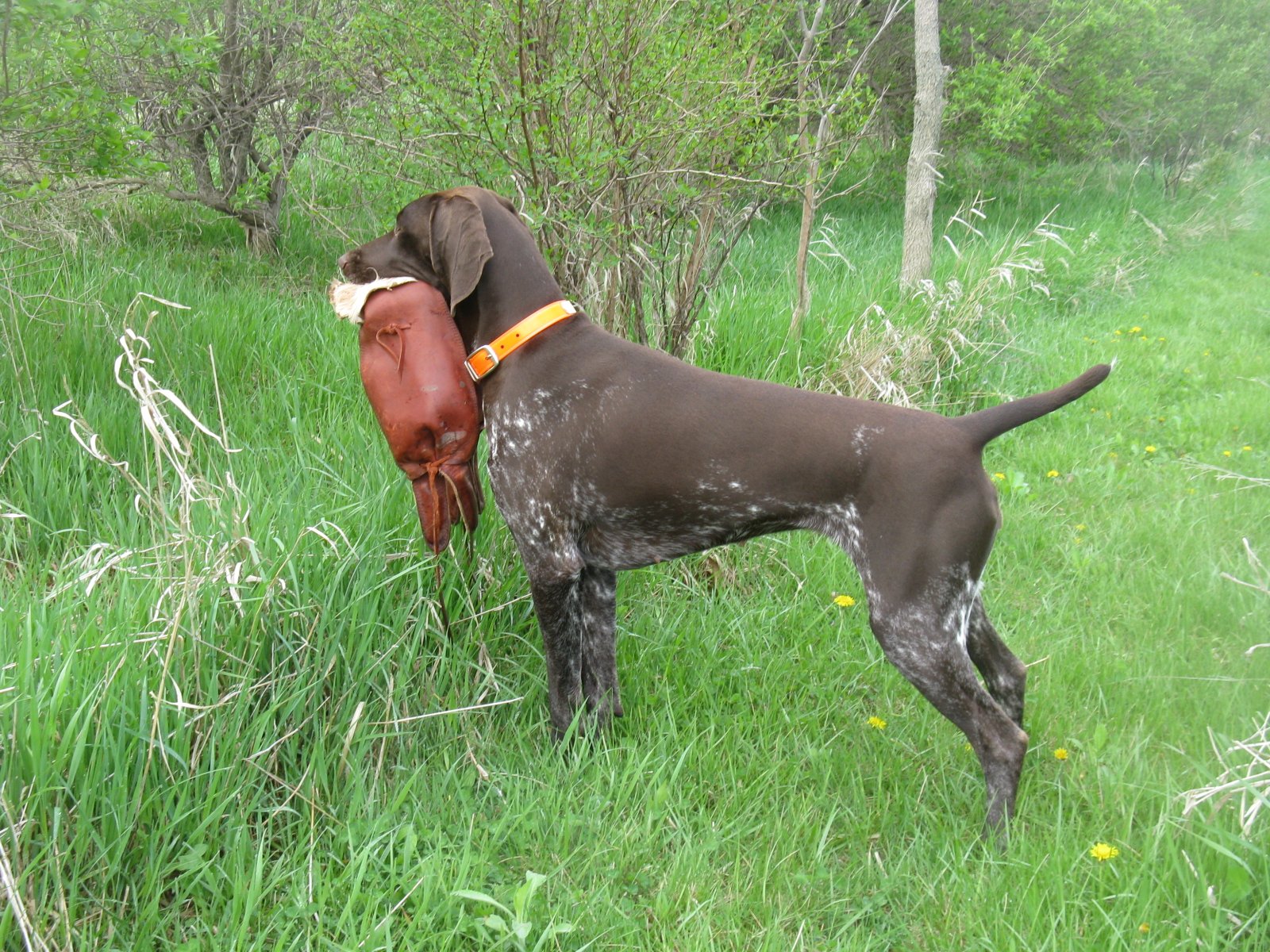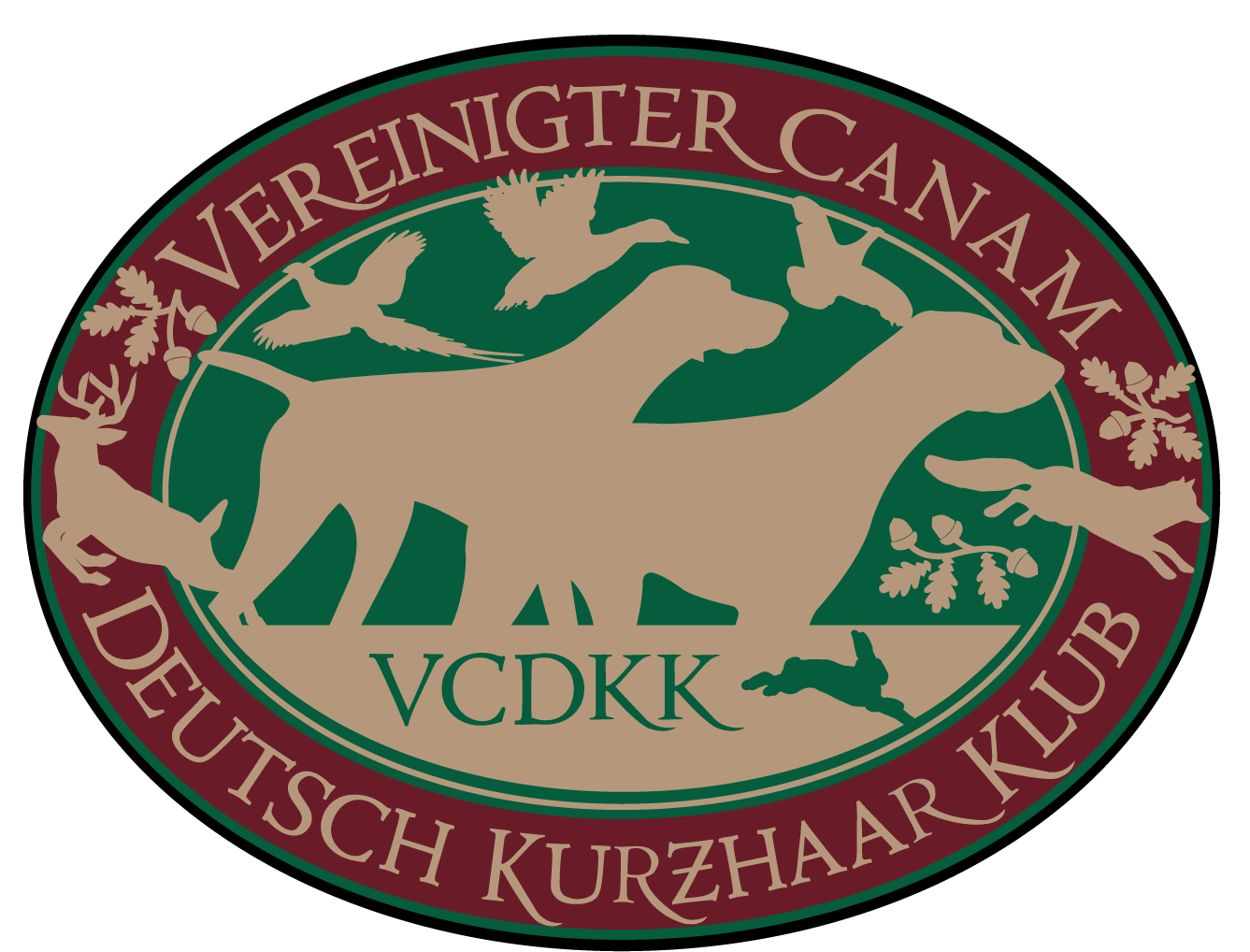-
Hunting upland game and waterfowl really started to become the sport that it is today with the introduction of the black powder shotgun. Prior to this introduction, birds were harvested though falconry or with nets. The introduction of the double barreled shotgun in 1750 meant birds could now be shot in flight. This opened up hunting opportunities to a much larger segment of society. Many of these people lived in town or were unable to keep large kennels of dogs. They could not keep pointers, retrievers, hounds, waterdogs and trackers. They needed a versatile dog, who could fulfil all their hunting needs.
There were two schools of thought on how to fulfil these needs, to cross various breeds to create a new breed or to improve and refine an existing breed. The modern Deutsch Kurzhaar is an example of the later approach. In a relatively short period of time the Deutsch Kurzhaar has transitioned from the plump, cumbersome dog of the past, to the present noble appearance we see today.
In 1880 the Brown-Tiger-Club was founded and the club name was changed to Kurzhaar Berlin in 1881. A system of tests were developed to evaluate the young dogs against a standard, not each other. There were no winner or losers. The purpose of these tests was to provide a fair measure of the litter, that a breeder had produced and also what other breeders had produced as well. This data allowed the breeders to make intelligent and informed breeding decisions to improve the breed. The tests also certified future breed stock. Only the dogs that completed and did well in these tests, could be use in the breeding program. These traditions continue on today.
Starting in 1897 the data collected each year is published in a Zuchtbuch (breed book). Information on each litter that was produced during the breed year is listed in the front of the book and the results of all of the litters that are tested that year are listed in the back half. The breed year is from the first of October, until the end of September. This is done to allow the pups to be mature enough, to be fairly evaluated. There are two natural ability tests for young dogs. The Derby in the spring and the Solms in the fall. Kurzhaars are also able to be evaluated in the JGHV (Jagdgebrauchahundverbands) tests, VJP, HZP and VGP. These test are available through several other clubs in North America. In addition to the performance data, information on any genetic defects (teeth and bite, eyes, missing testicles in males, hip dysplasia, temperament or mental instability problems) are also collected, so that these problems may be eliminated from the bloodlines.
-
The founders of our club in Germany wanted to breed and develop a dog to fulfil all their versatile hunting needs. In a relatively short period of time the Deutsch Kurzhaars Breeders have taken a mere pointer to a multi- talented, all propose, gundog in the field, woods and water. The breed’s particular assets are a far reaching nose, impressive firm pointing, willingness to track down game, retrieving, following blood scent, toughness and a passion for water. Hektor I (Kurzhaar Zuchtbuch volume 1), may be referred to as the ancestor of our Deutsch Kurzhaar, although his type was far away from today’s Kurzhaar. For the most part they were heavier, often had throat skin or a sway back, entropic eyelids or soft paws. As a result they were slower calmer workers, but they were already highly efficient and most of them were good retrievers. In a relatively short time our DK-breeders have formed the modern Deutsch Kurzhaar. The standard, as described in the Standard Deutsch Kurzhaar, has been achieved in all blood lines. The overall appearance is noble and harmonious, the exterior guarantees endurance, power and speed. DK-breeders offer hunters the Deutsch Kurzhaar under the moto: noble, versatile, reliable, easy to groom. One characteristic of the Deutsch Kurzhaar is that the breed is almost HD-free, objectively speaking that means the incidence of HD-C is close to zero.
-
The Deutsch Kurzhaar is popular in all colors from solid brown to brown ticked and black ticked and even solid black as well as combinations in between. The short thick hair is easy to groom. The house and car are soiled less, than by a long haired dog. The dog will dry faster after working in the water. The Standard Deutsch Kurzhaar describes the ideal versatile dog, which enables him to hunt and be active to an old age. We consider it a responsibility, a mission of our club, to maintain and improve the high standards in performance, conformation and to cultivate the characteristics that emphasize the advantages of the Deutsch Kurzhaar compared to other breeds. The breeder’s goal is to produce a versatile hunting dog whose work after the shot is at least as good as all the other versatile breeds, but whose work before the shot (excellent search, impressive pointing and fine manners behind game) are second to none. With an outstanding nose that drags the dog across the field and water to find more game.
history of the dk
Excerpts taken from www.deutsch-kurzhaar.de










